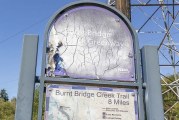The cost of dealing with homeless encampments has risen sharply over the last decade
VANCOUVER — As we begin this final part in our series on homeless camps in Arnold Park, it’s worth noting that, though it has been called a park for decades and appears in green on Google Maps, the city does not consider it an official park. Officially, it is an Urban Open Area, part of the Burnt Bridge Creek Greenway, which runs from Leverich Park to the Meadowbrook Marsh open space near Northeast 86th Avenue and Burton Road.
But, until just recently the city seemed content to allow the area to be referred to as Arnold Park. Vancouver Watershed Alliance, a nonprofit that has held tree plantings in the area, says the city recently asked them to stop referring to the area as Arnold Park in their materials.
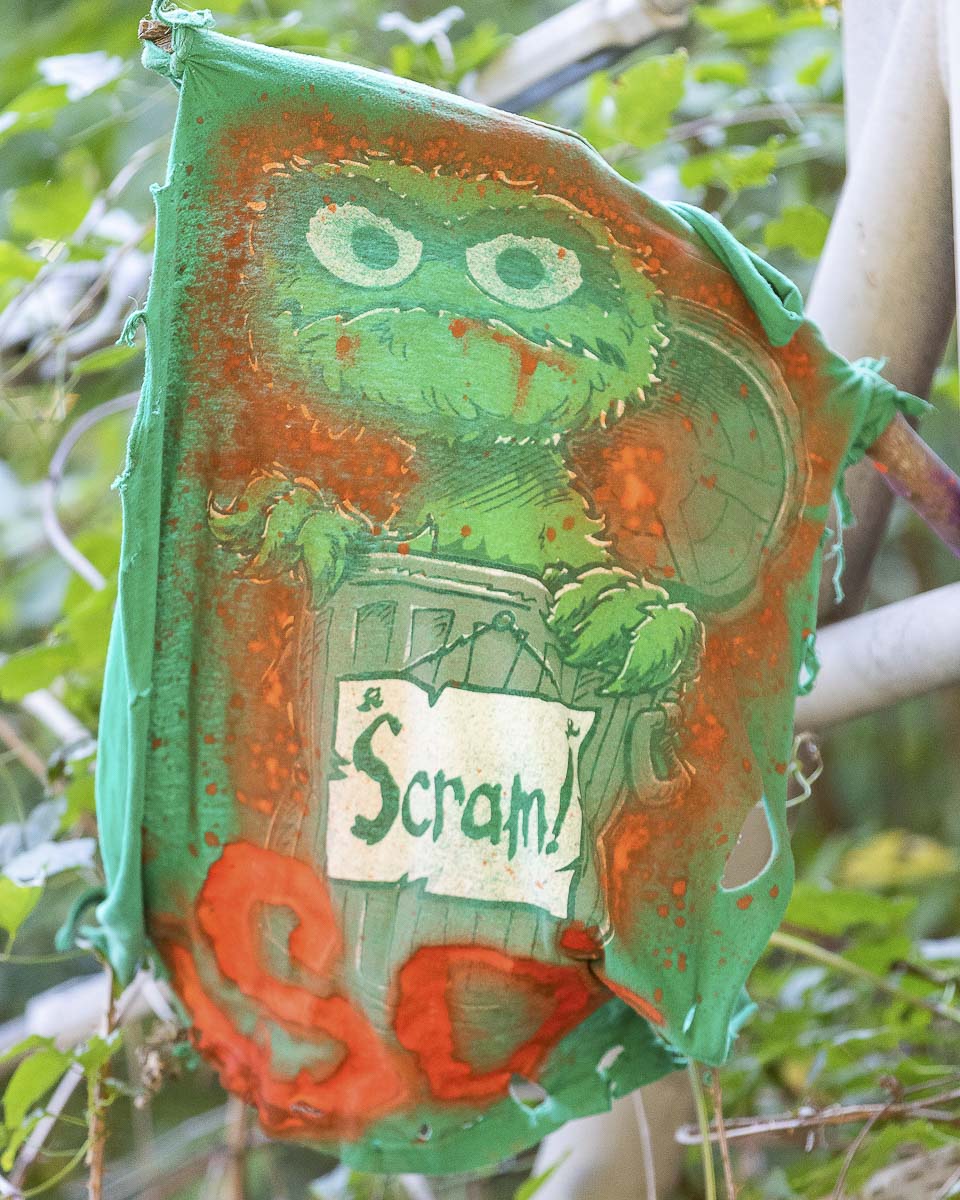
Carol Bua, a spokesperson with the city says “the name ‘Arnold Park,’ as commonly used in the community to describe this area, has been causing significant confusion and the Parks Department made a decision to no longer refer to this area as ‘Arnold Park’ in their materials promoting volunteer programs taking place in this area.”
Bua didn’t clarify what the confusion had been, but did say that they’ll now refer to it as the Burnt Bridge Creek Greenway or, more specifically, “the natural area to the west of Arnold Road.”
It may also be worth mentioning, then, that Arnold Road is a short dead end street that runs west of St. Johns Road on the north side of SR-500. It ends in the driveway of a single home, and cars are usually blocked from entering the natural area by a closed gate.
As the neighbor put it, “only the police get in that way.”
Most of the land known as “Arnold Park” is owned by the city, aside from a swath of Bonneville Power Administration property along high-capacity transmission lines. BPA is on record as expressing concern over people sleeping near those lines, due to the potential for shock or fire if electricity were to arc and hit the ground, though at this point the power agency hasn’t taken any action to clear campers. At one spot, trees have been cut down and left laying around, possibly as a way of deterring people from sleeping directly under the buzzing wires.
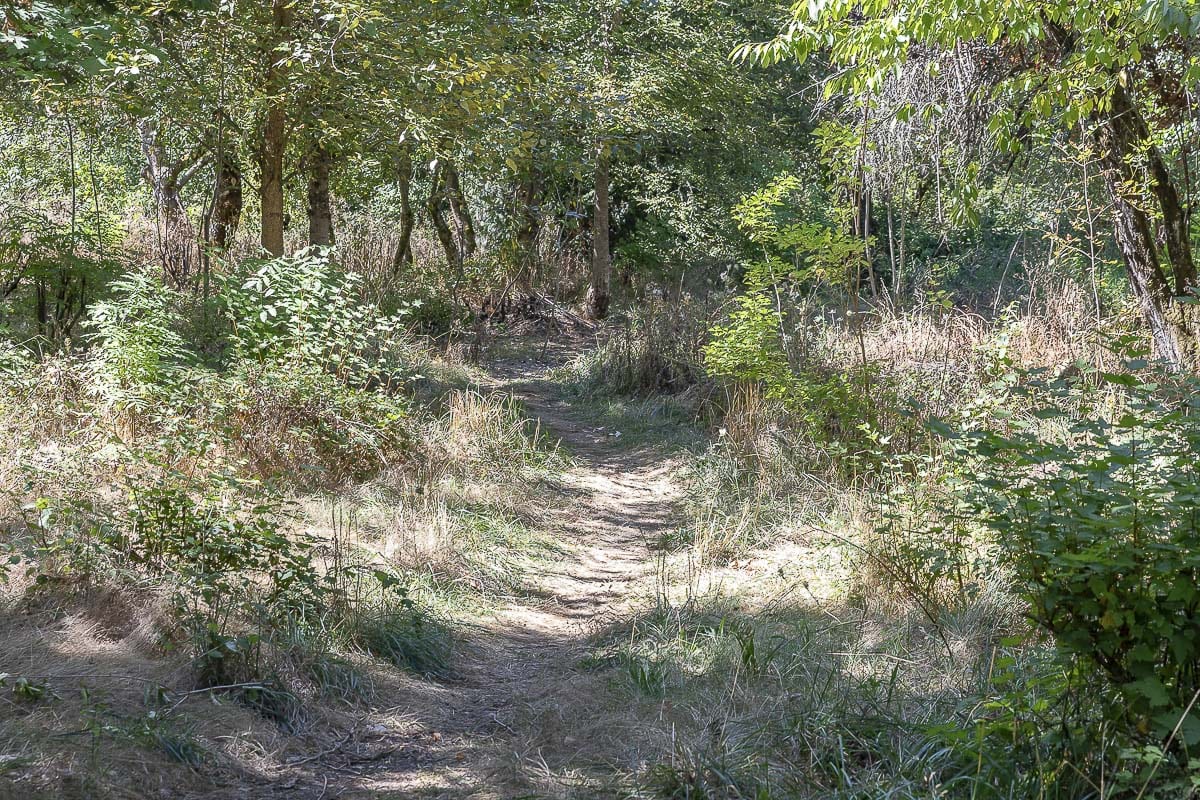
A total of 4.42 acres of the greenway were set aside as wetland mitigation following the building of the St. Johns Road interchange on SR-500. The riparian enhancement area was intended to “provide mitigation for lost wetland functions and is anticipated to provide stream shading, flood flow attenuation, water quality, and general habitat function,” according to documents from the Washington State Department of Transportation (WSDOT).
Recent water quality testing done on behalf of the city showed Burnt Bridge Creek has fecal bacteria levels sometimes far beyond acceptable limits. Water temperatures and bacteria levels, the study concluded, were sufficient to prevent salmonid production in the stream.
“People are washing their hands in this creek, and they’re trying to bathe in it,” says Peter Bracchi, who lives near the greenway and chronicles the homeless camps in the area. “That’s not good, and there’s no warning signs.”
Bracchi says he’s noticed fewer birds and other wildlife in the park, and those that do live there are increasingly relying on the garbage left behind by the homeless, potentially disrupting the food chain and making the spread of disease a significant possibility.
Complicating factors
As much as neighbors would love to see police and city work crews sweep through the park, dispose of the garbage there, and shut it down to anyone sleeping in it overnight, there are legal factors at play.
In 2016, a federal judge in Tacoma agreed with two homeless individuals who sued Clark County over the destruction of their property. The county ultimately settled the suit for $250,000.
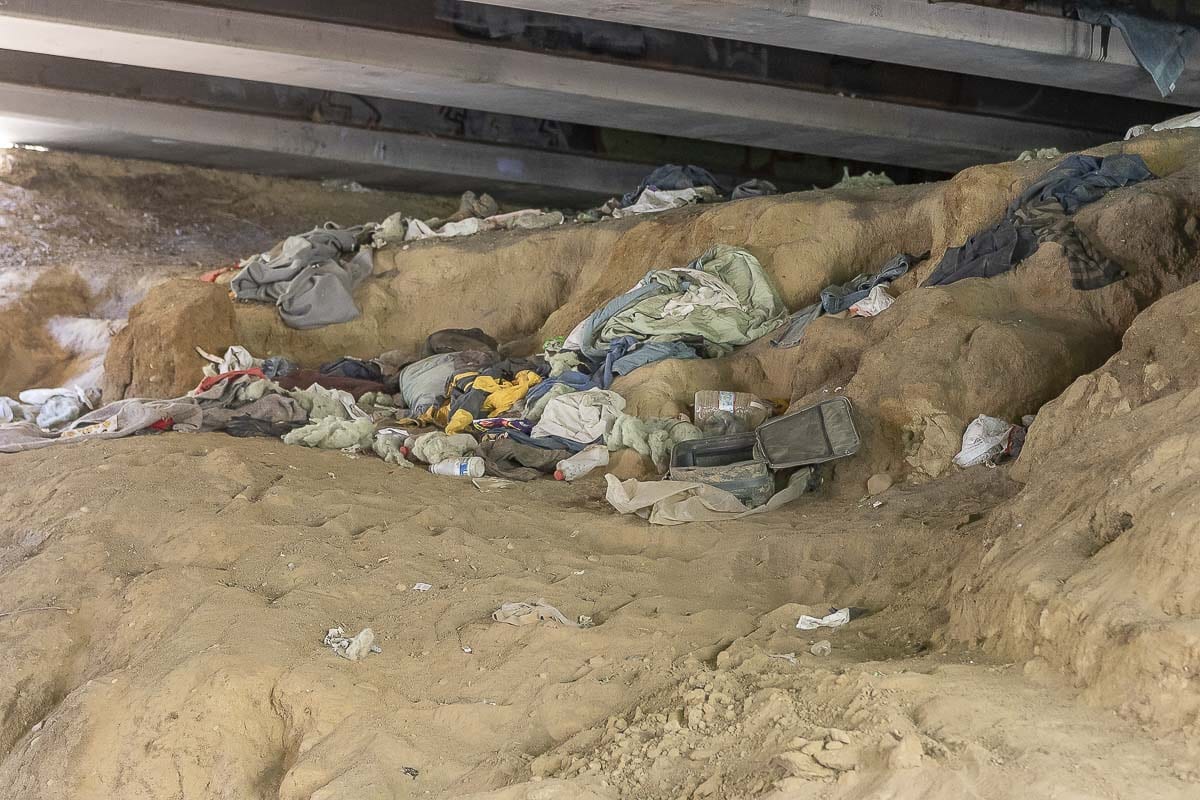
As a result, the city now provides a 72-hour notice before a camp is cleaned up, and must collect and store certain items for 70 days before they are destroyed. That results in added costs as the city rents cargo containers from Waste Connections in order to store what they pick up.
Brian Potter, the city’s operations superintendent, usually worries about making sure streets are repaired, grass is mowed, and parks are reasonably clean. He says in the last few years responding to homeless encampments has increasingly pulled them away from that work.
Generally, police officers are the first ones to respond to a complaint. They’ll post a notice to vacate, and then Potter’s employees come in to assess the situation. If the camp is messy enough, they may need to bring in Rapid Response Bio Clean, an outside company the city began contracting with this year to handle hazardous waste cleanup.
All of that has increased the cost of addressing homeless encampments at the same time such camps have risen greatly in number.
Many homeless camps have popped up on land maintained by WSDOT. The agency says homeless encampments on state right-of-ways increased from 217 in 2015 to 1,073 last year. Of those, 610 were in King County, with Clark County coming in second with 155 sites recorded last year. Approximately, 10,620 people were living outside in Washington state as of last year, and it’s expected that number will rise again this year.
The cost of cleaning up those sites has also skyrocketed, from $182,000 in 2008 to nearly $1.5 million in 2017. The number fell slightly last year to $1.2 million.
While some of the expense comes simply from the increasing number of camps, the complications of notification and storage of items taken during a cleanup also contributes to the cost.
“Homelessness isn’t just a WSDOT issue, it’s a community issue,” says agency spokesperson Tamara Greenwell. “So we try and approach the removal of encampments, when they’re in places that might not be safe or are imposing other health or safety risks, to do that in conjunction with our partners so that we’re trying to support everyone in our community.”
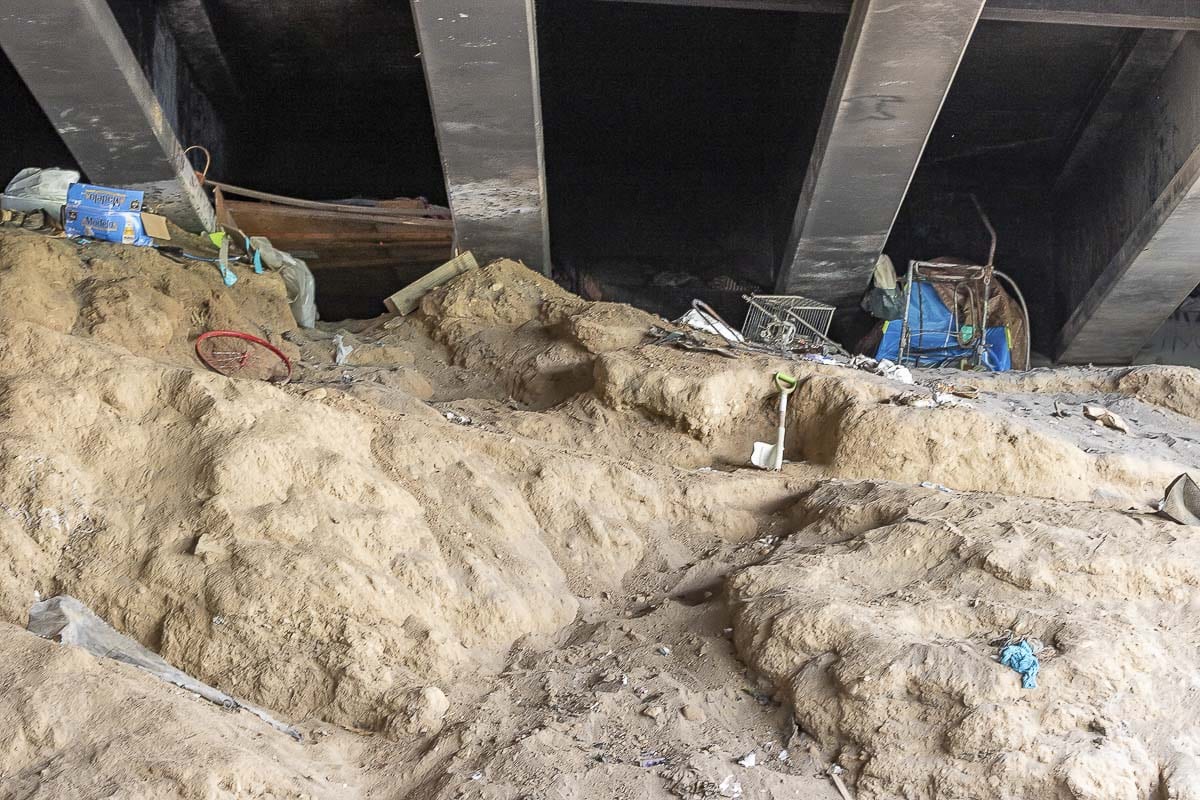
SR-500 runs over the Burnt Bridge Creek trail inside Arnold Park, and homeless encampments frequently pop up there. “Shelves” under the freeway provide a dry place for campers to stay, though there have been instances of people digging into hillsides under freeways.
Greenwell says their maintenance supervisor went out to Arnold Park after seeing photos provided by Clark County Today and talked with people staying there. Generally WSDOT won’t take action against an encampment unless they determine that it poses a risk to the safety of their employees, the public, or impedes the ability of motorists to use a state highway safely.
“We’ll partner with local law enforcement, oftentimes, local social services to ensure that folks know that there are resources available in the county and the community that we’re working with to try and get them some help,” says Greenwell.
New leadership
There are signs the way Vancouver addresses this growing problem may be changing. The recently opened Day Center operated by Share inside the Vancouver Navigation Center on Grand Boulevard has drawn a long list of complaints, but could represent one method of centralizing services for those who want them if more similar locations can be opened.
Right now the city is in the midst of an independent review of the day center, conducted by San Diego-based Alpha Project, a well-regarded homeless outreach program. They also hired Jackie St. Louis as their first homeless resource manager. Following the Alpha Project report, and with more time for St. Louis to give his input on the city’s response to the homeless crisis, Vancouver officials expect to create a Joint Executive Board on Homelessness with Clark County in an effort to have broader input on the issue.
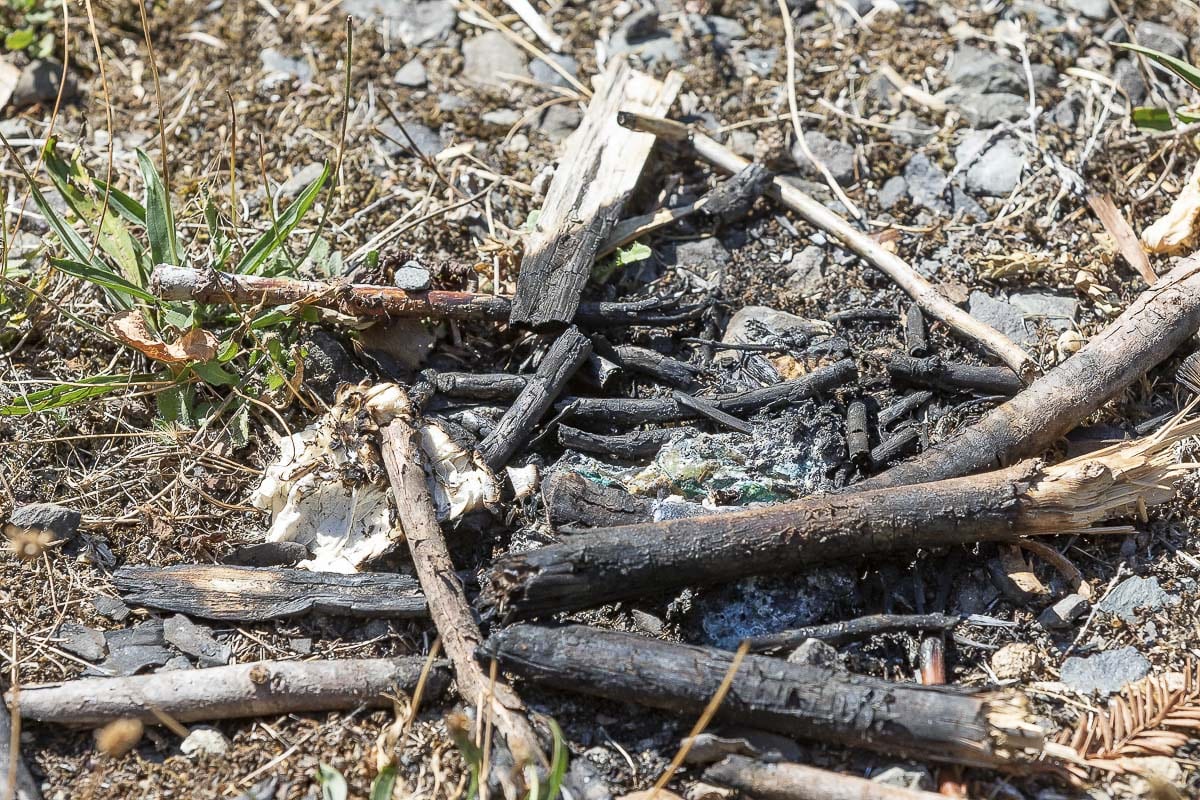
St. Louis comes from Seattle, where he resigned in frustration over how the homeless crisis was being handled. He didn’t want to get into specifics about what happened, but did say he very much agrees with people who say they don’t want to see Vancouver become another Seattle.
“I didn’t want Seattle to be Seattle,” he says. “I struggled a lot with how big the issue seemed to have gotten.”
St. Louis says he has heard the complaints about the situation in Arnold Park, and recently visited the site along with officials from Public Works, the Parks Department, and Vancouver Police.
“Given the vastness of the location, it is difficult to maintain it in the condition which it is once cleaned,” he wrote after the visit. “This site has been repeatedly cleaned over the years, only for it to be re-inhabited and subsequently the trash and waste remain.”
While St. Louis says he understands many of the people living in the park are the kind of homeless who prefer to live “on the fringes,” the city, he says, needs outreach that can be a more consistent presence in their lives.
“I also think we have to be very clear about the fact that public health and public safety hazards are not something that we can allow to persist in community,” he says, noting the hazardous human waste and trash accumulating in what is supposed to be a natural space.
“And that has to be communicated to this population,” says St. Louis “There’s understanding that this is the way in which you decided to live, but we cannot by nature just allow for your sort of lifestyle to infringe upon the health and safety of other members of the community.”
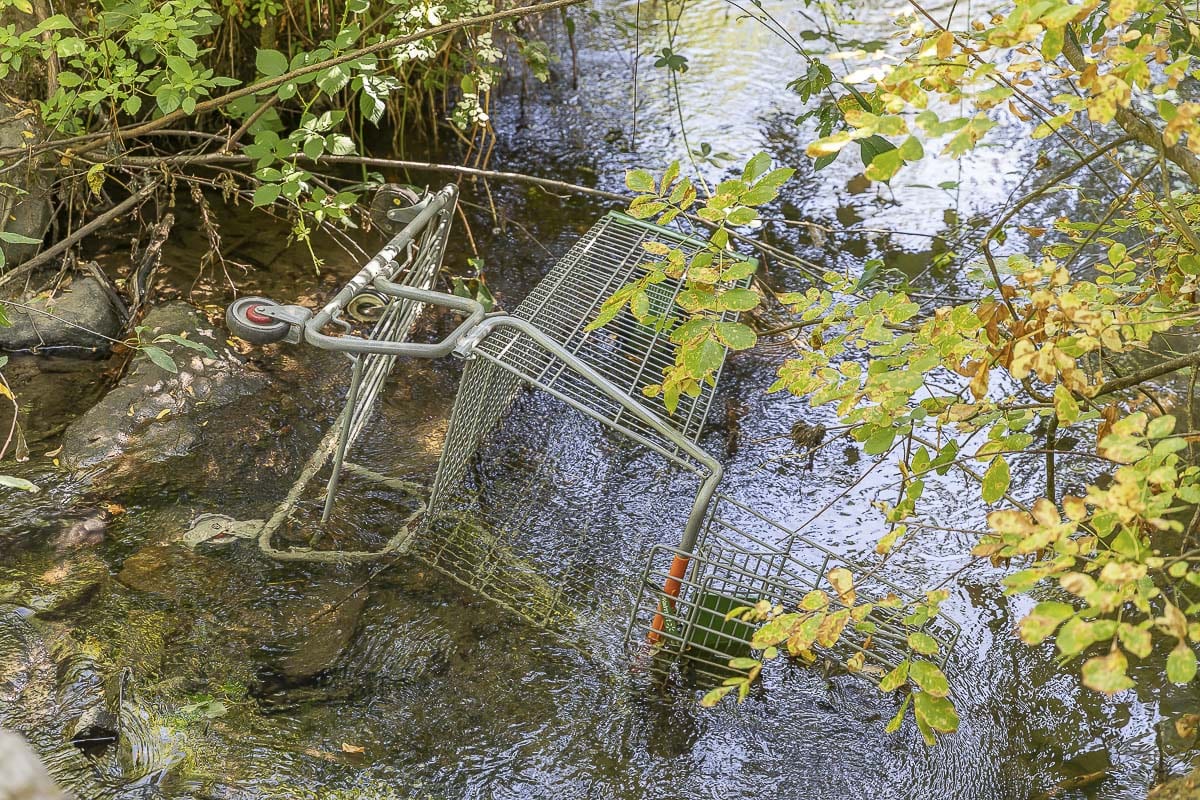
St. Louis says he prefers a “transactional” approach, allowing people to potentially live on public lands, but only if they respect the area and work to keep things safe and sanitary.
As for how he might address situations where safety and sanitation are at risk is still unclear. St. Louis says only that “it is our intent to develop a comprehensive plan to not only address the current issues but to implement strategies that dissuade them altogether.”
City Manager Eric Holmes declined to be interviewed as part of this story, as did Mayor Anne McEnerny-Ogle. Both said they will defer to St. Louis at this time, allowing him the time he needs to examine the landscape and make his own policies.
The difficulty for the city and social services remains how to deal with homeless populations that have declined to even attempt to take advantage of programs meant to assist them. Finding a delicate balance between individual rights and the rights of others in the community who feel threatened by people living in the woods near them, or natural areas being damaged by those encampments is a challenge.
“I believe that the city and all its residents need to have, at their disposal, a team that is able to respond in a reasonable amount of time to complaints such as these,” says St. Louis. “But we also want to be able to resolve those in a way that they don’t continue to be perpetuated across the city.”
That will include a detailed assessment of services in and around the city for those dealing with mental health concerns, who may be living on the fringes because they haven’t been able to get into a program, or find someone who can guide them to the help they need.
But there are other concerns, because a not-insignificant percentage of the homeless population in the area simply choose not to avail themselves of programs or services.
“We’ve given a group of people the right to basically almost do what they want to do because they’ve been labeled homeless,’’ Bracchi said. “And it’s cruel if we do anything against them to try and change their ways, almost.”
St. Louis says the city needs a response to the homeless crisis that can present a more consistent presence in the lives of people living on the street, making sure they know services are there to help them when and if they need it. The trick will be dealing with people who simply refuse to seek any help, and just want to live away from other people free from the responsibilities of a job, rent, or a mortgage.
And it’s not just Vancouver struggling with the issue. Clark County as a whole has hundreds of acres of undeveloped land, and homeless encampments have sprung up in numerous locations over the past several years.
Also read:
A walk in the woods: One neighbor’s quest to clean up Arnold Park
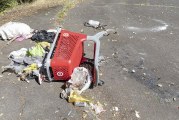
Out of sight: The law and the homeless camps of Vancouver’s Arnold Park
